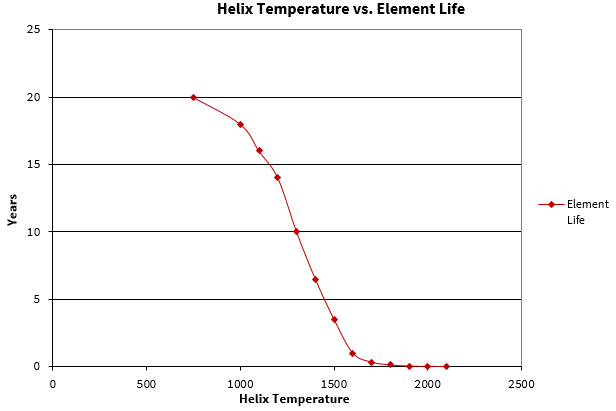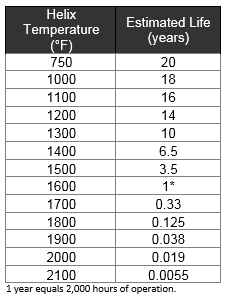Heater Life Expectancy
Knowing the life expectancy of any purchased product would be ideal. Imagine if you could plan all your scheduled replacements to the exact day the product was going to fail. Unfortunately, there is no way to calculate when any product will fail much less the life of electric heater. However, there is data available that allows one to better design a heater to maximize the life expectancy while still meeting performance needs.
THE DATA
The life expectancy of a mineral insulated heating element is directly related to the internal temperature of the coil or helix. The failure of an electric heater usually is due to work-hardening of the resistance coil. Over the life of a heater, the chromium in the NiCr resistance coil will diffuse out to the surface of the wire, where it oxidizes. The higher concentration of nickel in the wire will cause embrittlement of the coil, and it will fail under the stress created by thermal cycling of the heater. High temperatures will accelerate this process and ultimately result in failure. The below graph illustrates the coil life expectancy vs coil temperature.


In Addition to coil temperature, the overall life of a heater is determined by the mechanical damage and or corrosion, contamination of the magnesium oxide, and the on-off cycling of the heater.
This information should be used as a reference only. The actual life of your heater can vary significantly based on the variables above. While helix temperature can often be the key to a successful heater design these other components cannot be ignored. Beyond three years of service the life is increasingly difficult to predict as the other variables become progressively more important.
For additional information on a key factors that impact heater life read our article on watt density.